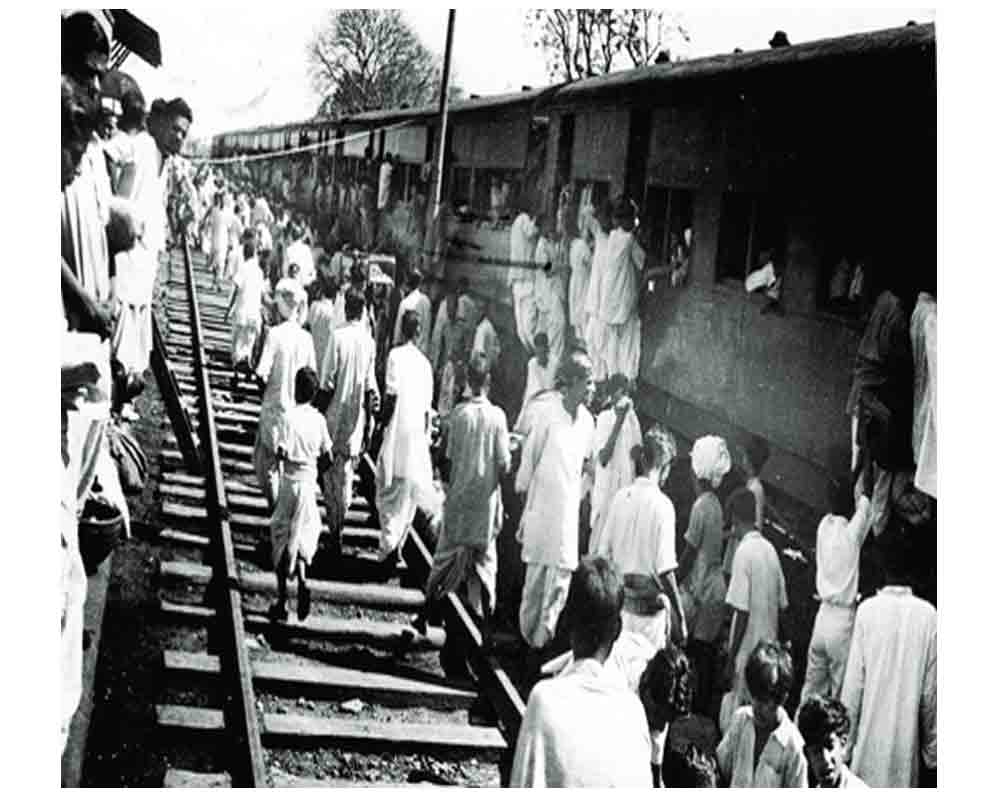Partition was accompanied by rivers of blood and the displacement of millions of people. But turns out, it has helped India in many ways
Member of Parliament Asauddin Owaisi has made a statement at Hyderabad saying “the Partition of India should never have happened” and it was a “historical mistake”. Mr Owaisi need not have a conscience for what happened in 1947 for the simple reason that he was not born when the country’s division happened. Secondly, even if he had been present, he would have been a subject of Nizam’s princely state of Hyderabad, without access to the then-newly formed dominions of India and Pakistan. His ancestor Janab Abdul Rashid was occupied with ensuring that his Highness the Nizam could be able to form a third dominion, i.e., Hyderabad.
Qaid-e-Azam Mohammad Ali Jinnah had to move heaven and earth to win support for Partition. Punjab was happy under its Unionist Party government, a coalition of Hindus, Sikhs and Muslims, with the latter always the province’s chief minister. Punjab’s wheat benefitted from an all-India market. Sindh was happy in its province, while the North West Frontier Province had a Congress government under the Khan Abdul Ghattar Khan. Balochistan was independent and not a part of British India.
The situation in the eastern end of India was similar; Bengal was a Muslim-majority province and content. The insecurity was felt more by Muslims in those provinces where they were in a minority; they would have no say in the decision on Partition. The one segment keen on Partition was Muslim businessmen. They felt they would be better off in Pakistan, where there would be virtually no businessmen to compete with, whereas Hindus have many business communities. The Qaid felt that the two cultures, Muslim and Hindu are poles apart and cannot co-exist. Their souls do not beat in unison. Therefore, despite his age and failing health, Jinnah nearly drove himself to death campaigning for Partition. He couldn’t survive beyond thirteen months after August 14, 1947. His weight was a mere forty pounds at the time of his passing. His other great handicap was that he knew only two languages-English and Gujarati and had to address his public meetings in English.
The Muslim League, in its desperation to win the 1945-46 elections, resorted to subterfuge. It propagated the idea that the Adivasis of Assam were not Hindu but worshippers of animal deities. Therefore, Hindus in the province were much less than 50 per cent. Assam therefore, ought to be included in Pakistan. This canard went a long way, spread by Bengal’s premier Sa’adullah, who was masterminding the campaign.
Viceroy Mountbatten had already concluded that the two communities couldn’t co-exist, due mainly to Jinnah’s campaign for Direct Action. The rioting across many parts of northern India was so rampant as to convince any foreigner that what Jinnah intended to convey was indeed true. There was another factor in the Viceroy’s mind and that was Netaji’s Subhas’s Indian National Army (INA), many of whose soldiers had gone back on their oath of loyalty to the king and country. The question arose: what was the guarantee that other employees of the Crown, civil and military, would not follow the example of Netaji’s men? To make matters worse for the British, the Indian Navy mutinied in February 1946 on the streets of Bombay and Karachi.
The Clement Atlee government in London therefore, decided to gracefully pull out of India before having to face many such embarrassing mutinies. By the time Jinnah’s election campaigning was over, by and large, most Muslims of India were converted to the idea of Partition. This is notwithstanding the occasional unconventional conduct of the Qaid. At a public meeting in Jalandhar, reported by Pran Chopra of the Statesman, the muezzin’s call to prayer was heard. The Qaid stopped speaking to let the audience disperse for namaz, but he sat down on a chair and pulled out a cigar to enjoy a satisfying smoke.
Independence-cum-Partition was announced on August 14, 1947. The green flag of Pakistan was unfurled by the Qaid in the presence of Earl Mountbatten of Burma. Partition was accompanied by rivers of blood and the displacement of millions of people.
Was Pakistan’s creation a “historical mistake” as Owaisi of the Majlis-e-Ittehad-ul-Muslimeen suggests? Let us take a look at what undivided India would have looked like today. With about 450 million Muslims; 180 in Pakistan, a similar number in India and 110 or so million in Bangladesh, an undivided India would have been in a state of perennial civil war, or would have had a democratically elected sultan at the centre. The trajectories India and Pakistan have taken after 1947 prove this point beyond a shade of doubt. While India today has risen to become the world’s fifth biggest economy, a scientific and technological power and is on the pathway to becoming a superpower, Pakistan is a country of religious strife and global terrorism. It broke up once in 1971 and will eventually implode again. A Pakistani interviewee on YouTube recently congratulated India for landing Chandrayan-III on the moon but did not forget to add, “Hindus should thank Qaid-e-Azam Jinnah for this success, because had he not separated us (i.e., Muslims) from the Hindus, India today would have been a gigantic Pakistan; forget Chandrayan or anything else”.
(The writer is a well-known columnist, an author and a former member of the Rajya Sabha. The views expressed are personal)
























